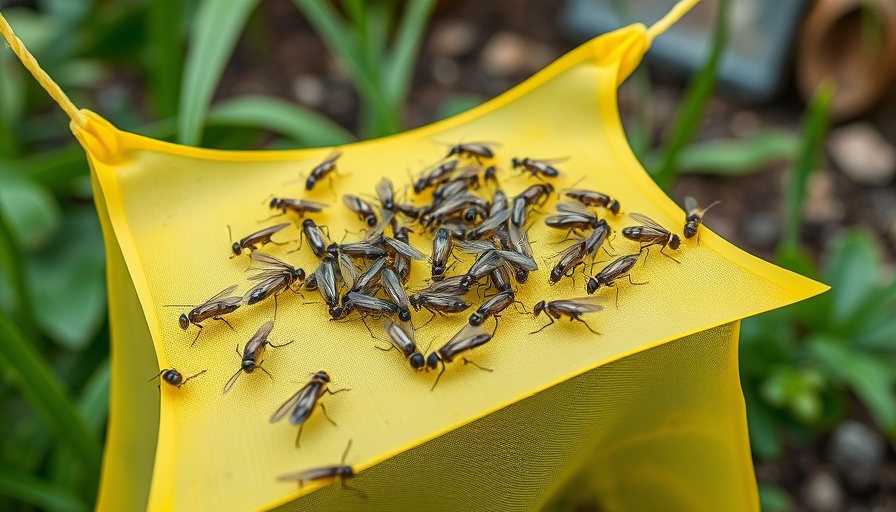
Understanding Gnats: What You Need to Know
Gnats, those pesky little flying insects, are more than just nuisances; they can also indicate larger problems within your household or garden. Recognized mostly in three forms—fungus gnats, fruit flies, and drain flies—each type has preferences for their breeding and feeding grounds. Fungus gnats typically hover around overwatered plants, looking for moisture to breed. Fruit flies are often spotted flitting around ripe fruit in the kitchen, while drain flies prefer the dank environment of drains and sewers.
Effective Methods to Eliminate Gnats in Your Home
Getting rid of gnats requires understanding their behavior and environment. Here are several tested methods to control and eliminate these insects:
1. Utilize Bug Zappers
Bug zappers are effective in trapping gnats by attracting them with UV light. Models like the Zevo Flying Insect Trap are safe for indoor use and perfect for placing near trouble spots in your home.
2. Create Vinegar Traps
Vinegar traps are a simple home remedy utilizing apple cider vinegar's enticing aroma. You can make a trap by covering a glass with plastic wrap, securing it with a rubber band, and poking small holes for insects to enter but not escape. Another profitable method incorporates old fruit and vinegar in a jar topped with a cone made from printer paper.
3. Use Boiling Water
Pitting boiling water down your drains can help reduce gnat populations by killing larvae and eggs right where they breed. This method is straightforward and resource-efficient, eliminating multiple potential problems in one go.
How to Manage Gnats Outside Your Home
Outdoor gnat control focuses largely on preventing conducive environments. Identifying areas of standing water, cleaning up debris, and ensuring soil drainage can dramatically reduce the prevalence of these insects.
4. Examine Your Garden Care
Overwatering is a leading cause of gnat infestations in gardens. Fungus gnats thrive in moist conditions, so allowing your soil to dry out between watering can be key. Also, rotate your plants and check for signs of excess moisture at the base.
5. Keep Your Yard Clean
Regularly removing garden debris, like fallen fruit or decaying plants, can eliminate habitats for gnats. Compost piles should be maintained meticulously as well—consider keeping it aerated and dry if gnat populations become a problem.
Preventing Future Infestations
After you've eliminated your gnat problem, consider proactive measures to ensure these pests don’t return:
6. Clean Drains Regularly
Cleaning your drains with a combination of boiling water and baking soda periodically can prevent gnat breeding. This practice ensures a clean, dry environment where unwanted insects cannot thrive.
7. Monitor Indoor Plants
Keep an eye on your houseplants, checking for signs of moisture buildup or infestation. If possible, let the top few inches of soil dry out between waterings, and consider using insecticidal soap if problems persist.
Conclusion
Gnats may be small, but dealing with them requires both knowledge and action. Whether you choose to use homemade traps or opt for store-bought solutions, understanding their habits is crucial. Take immediate steps to prevent and eliminate these pests in both your home and garden. Remember, a gnat-free space is more than just a comfort—it's a healthier environment.
Act now—implement these methods and reclaim your space from gnats. Keep your home and garden pest-free with simple, effective strategies!
 Add Row
Add Row  Add
Add 




 Add Row
Add Row  Add
Add 


Write A Comment